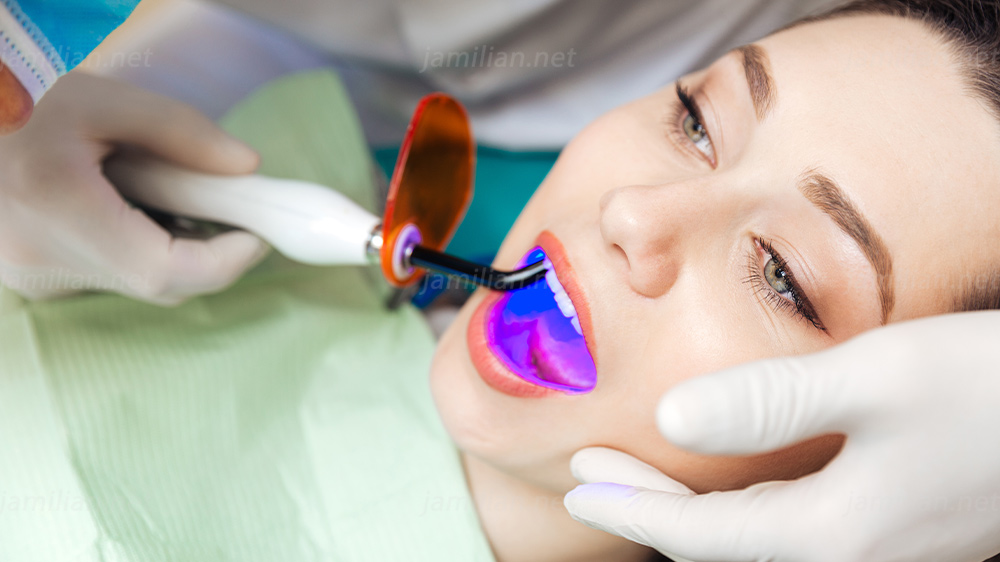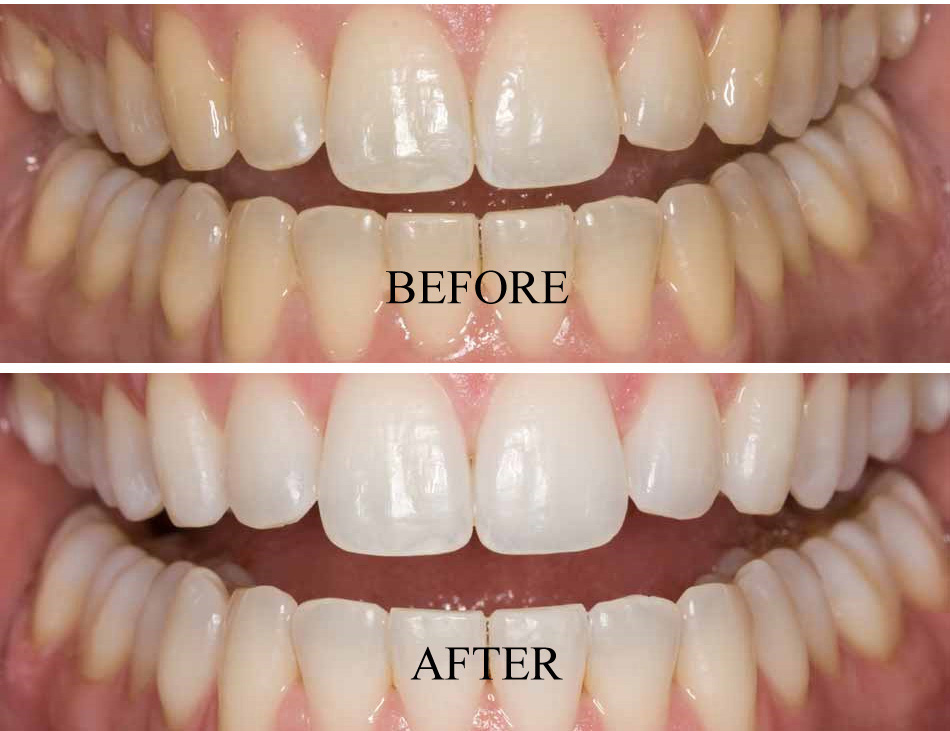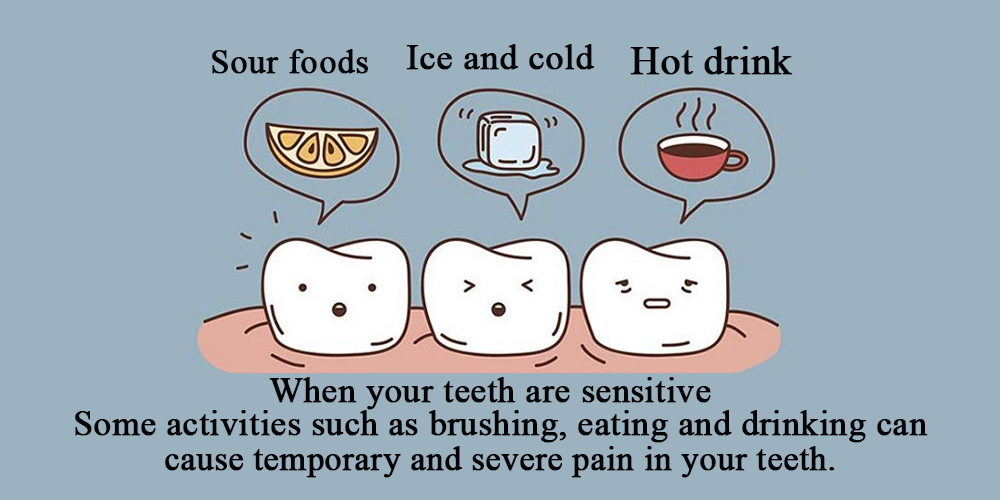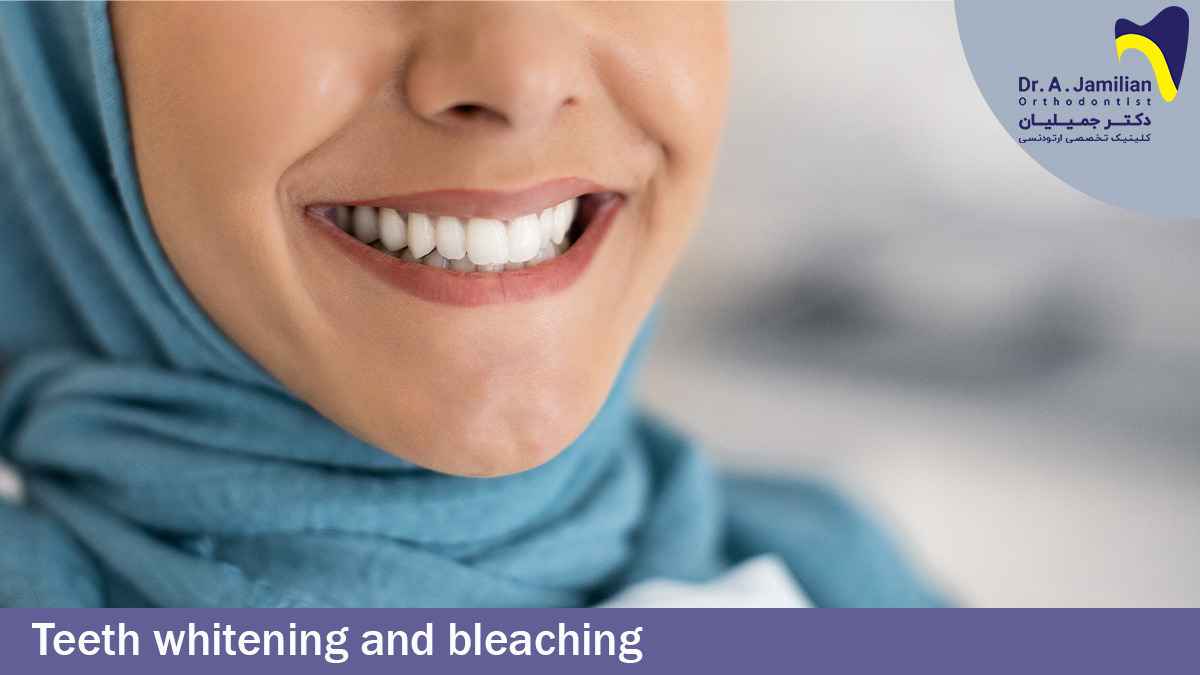One of the many general dentistry services is bleaching or teeth whitening. By valid dentistry references, scaling, as a teeth whitening procedure, brings back the natural color of teeth. On the other hand, bleaching causes teeth to become brighter than their natural color. Teeth whitening includes all following steps:
- Brushing with teeth whitening toothpaste
- Laser teeth whitening
- Using whitening Strips
- Using whitening gels
Currently, whitening services are among the most popular dental services around the world. Depending on their age different modifications happen to the person’s teeth. As one ages tiny cracks appear on their teeth. As time passes, bacteria aggregate in these cracks and cause teeth color to change. Teeth whitening procedures clean these bacteria from the teeth and restore them to their white color again.

Whitening Vs. Bleaching
To help with bleaching or whitening, a whitening toothpaste may help this process. However, to carry out bleaching, special bleaching materials are required and this process can’t be carried out by an ordinary teeth whitener.
Reasons for Darkened and Discolored Teeth
Teeth discolor or darken for varied reasons, depending on the reason they occurred, the discoloration could be classified as intrinsic or extrinsic.. The causes of intrinsic or extrinsic discoloration are as follows:
Extrinsic discoloration of teeth affects a change in the color and enamel damage. This is due to several factors such as consuming improper foods, beverages, tobacco, alcohol, colored and carbonated drinks will cause tooth color to change and discolor the outer layer of the tooth. If this problem is treated immediately and teeth are whitened, then there will be no need for bleaching. Besides, failure to treat extrinsic discoloration may lead to damages to the inner layer of the tooth.
Intrinsic discoloration and change in the color of the tooth might be caused by inherent or acquired factors. Some people experience inevitable intrinsic discoloration as they age. However, in most people intrinsic discoloration is caused by acquired factors such as medications, trauma, or tooth decay. Taking Tetracycline in some stages of life and the excessive use of fluoride can result in intrinsic discoloration of teeth. Normally, this type of change in color could not be treated with whitening and bleaching procedures. Therefore, it is recommended to carry out restorative procedures such as veneer and composite.

Instant Teeth Whitening Using Light
Instant teeth whitening using light or laser is in fact carried out by high-intensity light. This procedure may only be done in dental clinics and, not at home. In this procedure, plasma arc or LED light are used. Amongst the lights used for teeth whitening, halogen light is the most effective. Halogen light has shown a more efficient whitening effect on teeth. The appropriate light for this procedure is a light that activates peroxide molecules without damaging the dental pulp.
In this procedure, a blue lamp is used that has various wavelengths and is tunable. Each wavelength is tuned for hydrogen peroxide reactions. These steps are carried out in 6 to 15 minutes with 25% to 38% degrees. The interesting fact is that ultraviolet and heat are eliminated from this light and laser. The duration of each teeth whitening session at a dentist’s office is between 30 minutes to one hour.

Teeth Whitening & Bleaching Longevity
In order to increase the longevity of the result of teeth whitening procedures, the dentist will probably recommend the following:
- Using teeth whitening maintenance methods that could be carried out immediately after this method or at specific time intervals like once a year.
- Avoid consuming foods and beverages that darken teeth color. At least for one week after teeth whitening.
- If possible, use a straw for drinking beverages that could darken teeth color.
- Maintaining oral hygiene at a proper level by brushing and flossing after each meal and before going to sleep.
Does bleaching make your teeth sensitive or increase their sensitivity?
Yes, but not permanently! In some cases, teeth become sensitive while consuming hot or cold foods or drinks, which is temporary and after a while teeth will regain their normal state.

Treatment of sensitivity of teeth after whitening
Sometimes teeth become sensitive after whitening, which can be reduced through the following methods.
Sensitive teeth toothpaste: Sensitive-teeth toothpaste is made with materials that can reduce sensitivity-associated pain, such as potassium nitrate.
Chewing gum: It has been shown that chewing gum increases saliva and distracts people from pain.
Avoid whitening for a while: Do not use whitening products for a while.
Anesthetics: Teeth can be anesthetized for 10 to 30 minutes after whitening.
Diet: Avoid eating very hot or cold foods for a few days.
Change the toothbrush: Soft toothbrushes can help treat tooth and gum sensitivity.
Whitening of sensitive teeth
The dentist makes the final decision regarding bleaching of the sensitive teeth after examining the applicant’s teeth, and weaker materials with longer intervals are used for those with sensitive teeth. Some people are hypersensitive to peroxide-containing substances, and hence methods other than bleaching agents are suggested to whiten their teeth.

Is Teeth Whitening Process Dangerous?
No, bleaching is not a dangerous procedure and does not damage your teeth or gums. We have performed a large number of dental bleaching and we have never had a case in which teeth were damaged. This procedure has been practiced for almost 20 years in dentistry and no cases of damage to the teeth or even the risk of any damages to teeth or gums were reported.
Teeth Whitening Cost
Teeth whitening costs differ depending on the procedure and the material used. The location and region of teeth whitening are other factors that affect the cost.
In order to reduce the expenses of teeth whitening, follow the aforesaid tips to increase the longevity of bleaching. Taking into account that most people drink lots of coffee and tea in a daily manner, stained and yellow teeth are inevitable. Thus, you might need to spend money on bleaching at least once a year.

Methods to prevent tooth discoloration after whitening
After completing your teeth whitening treatment, there are a few steps you can take to keep your smile white.
Avoid stained foods and beverages: Coffee, tea, sports drinks, hard candies, berries and ketchup are all foods that can cause discoloration and tooth sensitivity.
Use a straw: When drinking liquids, use a straw to remove food coloring and allergens from the teeth.
Avoid smoking: Smoking can cause discoloration and sensitivity of the teeth. Smoking cessation can help keep your teeth shiny and healthy.
Use waterproof lipstick: Women are advised to use lipstick that is waterproof and does not affect their teeth or do not use lipstick for a few days after teeth whitening.
Whitening toothpaste: Change the type of toothpaste and with this change, double the bleaching effect and enjoy the whiteness of your teeth for a longer period of time.
Tooth Whitening and Bleaching FAQ
1-For what type of dental problems is bleaching suitable?
Teeth that turn yellow due to eating colored foods are most responsive to bleaching.
2-Is bleaching possible for children and teenagers?
Bleaching is not basically prescribed for milk teeth, but for those teeth which are discolored as a result of trauma and injury, bleaching with carbamide peroxide can be prescribed.
3-How long will bleaching last on teeth?
Many factors influence the durability of tooth whitening due to bleaching. The minimum endurance of bleaching is generally 1 to 3 years, sometimes up to 10 years. Extreme drinking of strong coffee and tea, smoking, excessive use of beverages and lack of attention to oral and dental hygiene will decrease the endurance of bleaching.
4-Is it possible for discoloration which has been caused by cigarettes and nicotine to be cured with bleaching?
Removing stains and discoloration caused by cigarettes and nicotine is not easy. These stains are initially superficial and if they are not treated, they will penetrate the teeth and turn into internal discoloration. Nicotine stains can be removed by using 10% carbamide peroxide overnight for 1 to 3 months.
5-How does bleaching cause teeth to be lighter?
Hydrogen peroxide and carbamide peroxide infiltrate into the enamel and dentin, which is not only an external color transformer but also causes an internal discoloration in the tooth. This cure brightens the tooth color without disturbing the tooth firmness during an oxidation procedure.
6-What are the most important side effects of bleaching?
One of the most common problems is the sensitivity of a person’s teeth to hot and cold foods (dental allergies). The next case is regarding the non-fulfillment of the demands of patients who are looking for very clear teeth.
7-What care should be taken after bleaching?
After bleaching, try to minimize the consumption of cigarettes and edible, colored food such as tea and coffee, and in case you have them, make sure to rinse your mouth straightaway.
8-What are the actions that should be done before bleaching?
You must fix decayed teeth before bleaching. Also, you need to know that bleaching has no effect on fillers, coatings and laminates. Before bleaching, if there is a germ on your teeth, scaling will help to achieve a better result.






